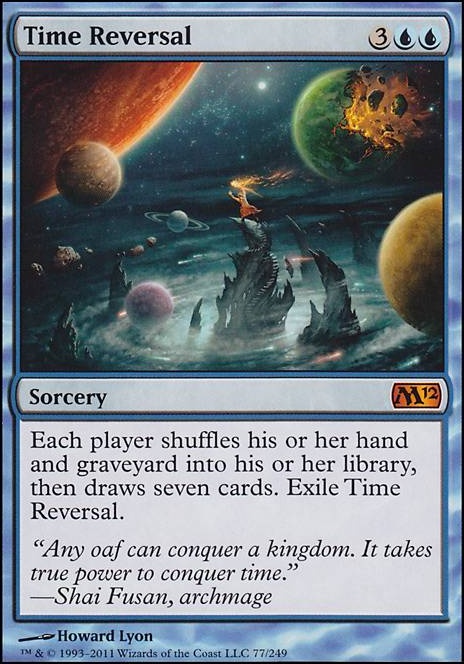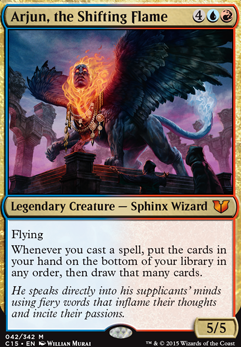Sorcery (21)
- 1x Baral's Expertise
- 1x Blasphemous Act
- 1x Day's Undoing
- 1x Echo of Eons
- 1x Enter the Infinite
- 1x Gamble
- 1x Gitaxian Probe
- 1x Mizzium Mortars
- 1x Mizzix's Mastery
- 1x Molten Psyche
- 1x Mystic Retrieval
- 1x Mystic Speculation
- 1x Ponder
- 1x Preordain
- 1x Reforge the Soul
- 1x Spelltwine
- 1x Spiraling Embers
- 1x Time Reversal
- 1x Vandalblast
- 1x Windfall
- 1x Winds of Change
Instant (9)
Land (38)
- 1x Castle Vantress
- 1x Command Tower
- 15x Island
- 1x Memorial to Genius
- 12x Mountain
-
1x
Mystic Sanctuary

- 1x Reliquary Tower
- 1x Riptide Laboratory
- 1x Shivan Reef
- 1x Steam Vents
- 1x Sulfur Falls
- 1x Temple of Epiphany
- 1x Terrain Generator
Creature (11)
- 1x Baral, Chief of Compliance
- 1x Disciple of the Ring
- 1x Fatespinner
- 1x Goblin Electromancer
- 1x God-Eternal Kefnet
- 1x Jace's Archivist
- 1x Laboratory Maniac
- 1x Mizzix of the Izmagnus
- 1x Niv-Mizzet, Parun
- 1x Niv-Mizzet, the Firemind
- 1x Obstinate Familiar
Planeswalker (3)
Commander (1)
Artifact (12)
- 1x Alhammarret's Archive
- 1x Arcane Signet
- 1x Commander's Sphere
- 1x Diviner's Wand
- 1x Elixir of Immortality
- 1x Folio of Fancies
- 1x Library of Leng
- 1x Sol Ring
- 1x Talisman of Creativity
- 1x Teferi's Puzzle Box
- 1x Thought Vessel
- 1x Vedalken Orrery
Enchantment (5)
Maybeboard
Creature (1)
Suggestions
Updates Add
Comments View Archive
Attention! Complete Comment Tutorial! This annoying message will go away once you do!
Important! Formatting tips — Comment Tutorial — markdown syntax
Please login to comment
92% Casual
Competitive
Revision 35 See all
(3 years ago)
| +1 | Ormos, Archive Keeper | maybe |
| +1 | Teferi's Ageless Insight | main |
| -1 | Thought Reflection | main |
| Date added | 7 years |
| Last updated | 3 weeks |
| Legality | This deck is Commander / EDH legal. |
| Rarity (main - side) | 11 - 0 Mythic Rares 30 - 0 Rares 16 - 0 Uncommons 16 - 0 Commons |
| Cards | 100 |
| Avg. CMC | 3.24 |
| Tokens | Bird 2/2 U, Emblem Jaya Ballard, Experience Token |
| Folders | EDH, EDH, EDH, Arjun, Deck Ideas, EDH, Mono Blue EDH |
| Votes | |
| Ignored suggestions | |
| Shared with | |
| Views |


